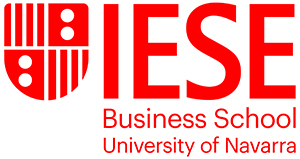Shifts in the competitive environment, in consumer habits and preferences, in processes and operations, in technology, in regulation… You can see many of these changes coming. You have to stay alert. This means investing time in thinking about the long term and asking yourself how the foundations of your business’ competitiveness might evolve in the future.
Discover the Guide to the main types of leaders, which one are you?
7 questions to find out if you are a visionary leader
Answering these seven questions will tell you whether you’re a leader with vision.
1. Can you anticipate your clients’ needs?
As long as you have satisfied customers, the future of your company is secure. But don’t wait for them to tell you what they need. Anticipate their demands, practice active listening, and offer solutions instead of selling products. If you don’t, someone else will. Digitalization has made consumers aware of their power. They compare companies from one day to the next. And many don’t even complain when dissatisfied; they simply choose a different option. The good news is that you can also use digital technologies to listen to and interact better with your customers and compete effectively in markets in constant evolution.
2. Do you keep an eye on your competitors?
This includes the ones you have today and the ones you could have in the future. Michael Porter’s theses on competitive forces are as valid today as ever: the threat isn’t limited to the competition exerted by traditional actors in a given sector or industry.Rather, it can take the form of an innovative business model (like those based on the collaborative economy), a disruptive technology (like 3D printing) or a radical transformation of distribution channels (like the one being led by some digital platforms).The competition is increasingly complex and unpredictable. But, precisely because of this, you have to be sure to keep an eye all fronts: the technology that’s coming, the consumption and purchasing habits that are taking hold, the companies that offer alternative business models…
3. Are you constantly making improvements?
The most effective managers and the top businesses never stop asking how they can improve. They question not only how to do things (operations), but also what they do (their value proposition) and even for whom (their target customers). And although there is no general rule for detecting potential improvements in efficiency, there are priority areas where you can act to transform operations and turn them into a source of important competitive advantage.
4. Do you prioritize what’s important, and not just what’s urgent?
Preparing a company for the future is one of a CEO’s most important responsibilities. It’s a task that should never be postponed or delegated. However, it’s very common in the general manager’s day-to-day for the urgent to take precedence over the important. The general manager’s schedule reveals which processes take the largest share of his or her time and which tasks aren’t getting enough attention. Take a look at your schedule and make sure to set aside quality time to think about and work on the future.
5. Can you communicate your strategy at all levels?
A vision, no matter how brilliant, will never be realized if it’s not shared with and accepted by the rest of the organization. However, there are still many companies and CEOs that tend to lock up the strategy in boardrooms or to share it only with top-level managers. Big mistake.The corporate strategy shouldn’t be treated with the same secrecy as the formula for Coca-Cola. Of course it’s better not to clue in the competition too much. But, as Jaume Llopis says, “having the best strategy in the world means nothing if your team doesn’t buy it.” Moreover, it’s been shown that employees’ commitment and motivation tend to increase when they participate in strategy development by sharing ideas and suggestions with their supervisors. ¿How to improve your strategic thinking?
6. Do you look beyond your own organization?
Keeping up to date on business trends, on changes in key sectors of the economy and on political, technological, sociocultural and regulatory changes is important for being able to glimpse potential market shifts. The general manager’s radar must always be on.
7. Do you sketch out future scenarios?
We’re not talking about developing multi-year strategic plans (since in such a rapidly changing environment, these become outdated quickly). Instead, we’re talking about imagining an ideal future for the company beyond plans, schedules, and budgets. In order to define this vision for the future, it’s useful to ask yourself questions such as: Where would we like to be in 10, 20 or 30 years? What will our primary activities be? What needs will we have to satisfy? What do we want to be recognized for? Reflecting on these answers will make it easier to reach a shared vision for the company. One useful tool is scenario planning which, as Mike Rosenberg explains, makes it possible to glimpse the business environment in the future and make better strategic decisions.
Discover the 13 questions to find out if you are a good leader.
IESE’s masters and executive education programs are an ideal environment for asking yourself these and other questions. Along with other executives with the same goals as you, you’ll be able to go further by cultivating and expanding your strategic vision.

















